Historic Jarvisburg Colored School and Museum
Introduction
Text-to-speech Audio
This historic school holds a museum that preserves and shares the history of the Black community of Jarvisburg, as well as the larger history of race relations and segregation in North Carolina. The museum is located in the former "Colored School" that opened in 1867 in Powells Point, North Carolina. The school was transported to its present location in the 1890s and expanded in 1911. In 1950, the school board consolidated several area schools for African American children into one building at the Currituck Union School. Consolidation led to the closure of this particular school. Despite the Supreme Court's 1954 ruling against segregated schools, school officials continued to operate separate schools for white and Black children in this part of North Carolina until the 1960s.
Images
Alumni and members of the Black community organized to save and preserve this historic school in the 1990s.
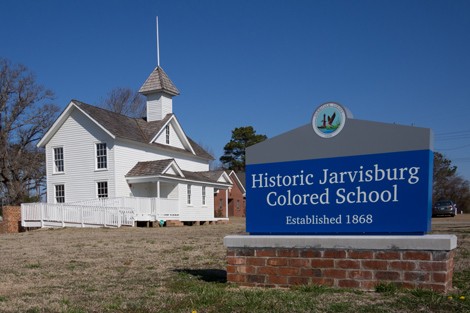
In 2014, the Historic Jarvisburg Colored School Association opened a museum in the school.
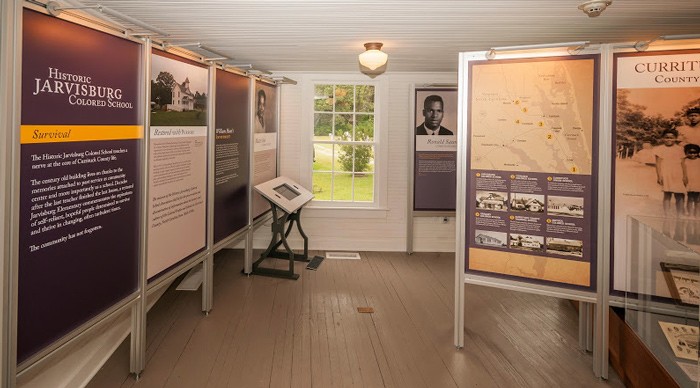
Exhibits not only tell the history of this school, but also several other Black schools in this part of North Carolina.
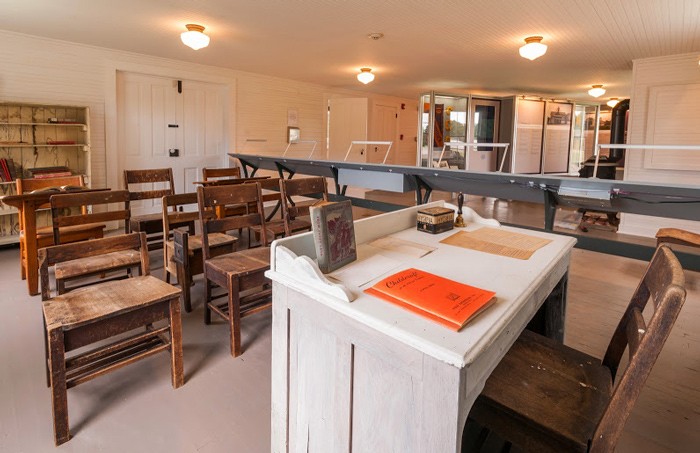
Efforts to stabilize the historic school began in 2003.
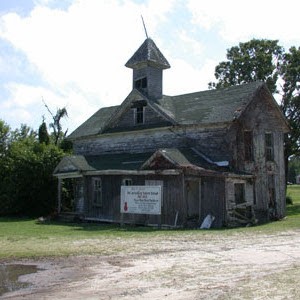
The building may have been demolished had it not been for the partnership of community members, preservationists, and local and state government.
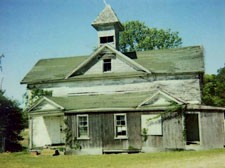
Backstory and Context
Text-to-speech Audio
This former school, like thousands of others throughout the South, was nearly lost due to decades of neglect. There were several efforts made to restore the building during the 1970s and 1980s. Church and community groups saw potential to preserve and maintain the building as a community center, a meeting place for a local Masonic lodge, or as a space for the Corinth Church to operate youth camps given that organization's financial sacrifices to support the school in the past.
In 1972, the state listed the building as a possible site worthy f preservation for its historical and cultural value, an action that may have helped prevent the building from being demolished, but placing the building on a long list of worthy sites alone did not produce resources needed for preservation.
The turning point came in 1998, when members of the Corinth Baptist Church formed an organization dedicated to preserving the school and operating it as a historical site. With others in the community, church members began work to see what might be done to raise both awareness and funds. Fortunately for the church members, the state Department of Cultural Resources Division of Archives and History had formed a new organization called Saving African American Heritage. By partnering with the state, church members were able to partner with experts and advocates of historic preservation. By 2002, the campaign to save the school was underway. With help from the Currituck County Commission, an architectural firm began work to stabilize the building that had become nearly dilapidated.
Gifts of time, money, and resources helped the church members as they worked to not only stabilize the building, but restore its interior and exterior to a condition that would allow them to place the school on the National Register of Historic Places. Between 2003 when the work to stabilize the building began, and 2014 when the restored school was dedicated, the effort to preserve and operate this historic site required the cooperation of hundreds of volunteers and demonstrates the ways that community members and government can work together to save historic sites.
In 1972, the state listed the building as a possible site worthy f preservation for its historical and cultural value, an action that may have helped prevent the building from being demolished, but placing the building on a long list of worthy sites alone did not produce resources needed for preservation.
The turning point came in 1998, when members of the Corinth Baptist Church formed an organization dedicated to preserving the school and operating it as a historical site. With others in the community, church members began work to see what might be done to raise both awareness and funds. Fortunately for the church members, the state Department of Cultural Resources Division of Archives and History had formed a new organization called Saving African American Heritage. By partnering with the state, church members were able to partner with experts and advocates of historic preservation. By 2002, the campaign to save the school was underway. With help from the Currituck County Commission, an architectural firm began work to stabilize the building that had become nearly dilapidated.
Gifts of time, money, and resources helped the church members as they worked to not only stabilize the building, but restore its interior and exterior to a condition that would allow them to place the school on the National Register of Historic Places. Between 2003 when the work to stabilize the building began, and 2014 when the restored school was dedicated, the effort to preserve and operate this historic site required the cooperation of hundreds of volunteers and demonstrates the ways that community members and government can work together to save historic sites.
Sources
Jeff Hampton, "Historic school for Blacks in N.C. is restored," Virginian-Pilot, September 19, 2010.
"Renovations Coming Along," Coastland Times, August 28, 2005.
"The Jarvisburg Colored School: 1868-1950" http://www.historicjarvisburgcoloredschool.com/history.shtml
